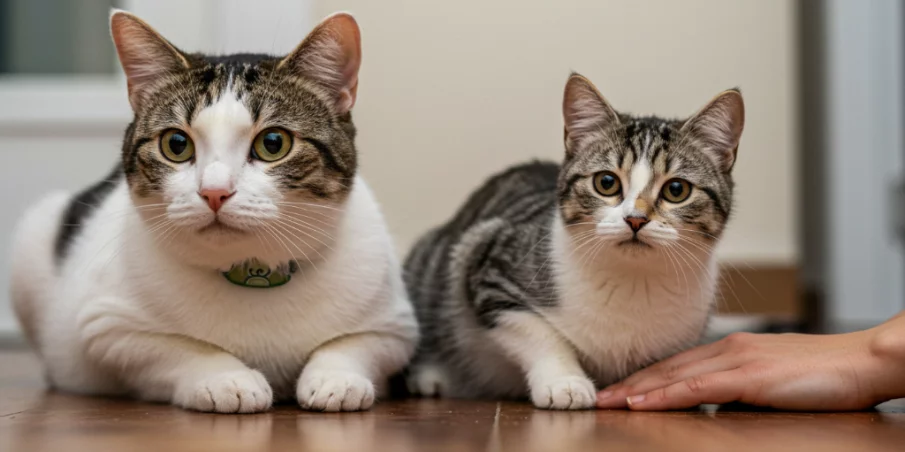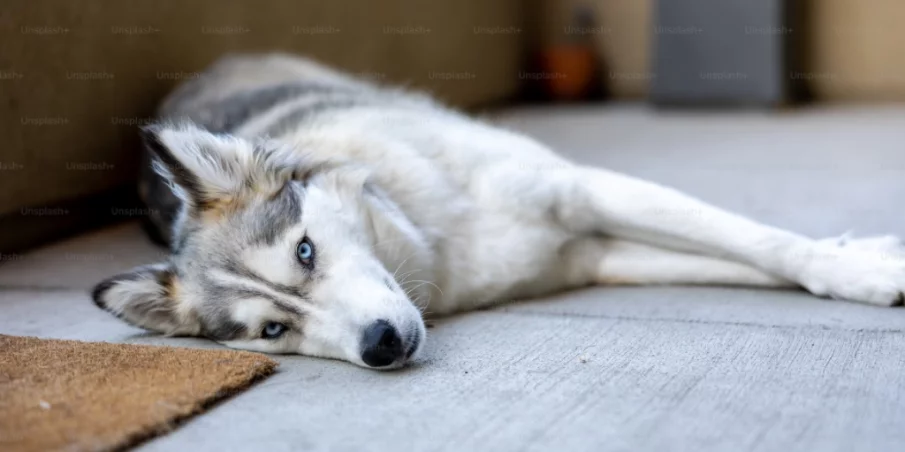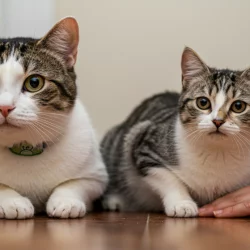Indoor Air Quality: What Your Pet is Really Breathing In

You love your furry friend, don’t you? They’re part of the family, curling up on the couch or scampering around the house, bringing joy with every wag or purr. But have you ever stopped to think about the air they’re breathing? Indoor air quality affects more than just humans—it can have a big impact on your pets too. From dust to dander to sneaky pollutants, the air inside your home might not be as clean as you think. Let’s dive into what’s floating around in your home, how it affects your pet, and what you can do to keep their lungs happy and healthy.
Why Indoor Air Quality Matters for Pets
Pets spend most of their time indoors, often more than we do. While you’re out at work or running errands, your dog, cat, or bird is breathing the same air for hours on end. Unlike humans, pets don’t have the option to step outside for a breath of fresh air or complain about a stuffy room. Their smaller bodies and faster breathing rates make them especially vulnerable to poor indoor air quality. Imagine your cat taking quick, shallow breaths or your bird’s tiny lungs working overtime—any pollutants in the air hit them harder than they hit you.
Poor indoor air can lead to a range of health issues for pets, from mild irritation to serious respiratory problems. For example, birds are particularly sensitive because their respiratory systems are so efficient, pulling in more air (and pollutants) with each breath. Dogs and cats can develop asthma, bronchitis, or even long-term lung damage from prolonged exposure to bad air. If you’ve ever noticed your pet coughing, sneezing, or acting lethargic, the air in your home could be part of the problem. So, what’s lurking in your indoor air that could be harming your furry or feathered friend?
Common Indoor Air Pollutants Affecting Pets

Your home might feel like a safe haven, but it’s not immune to air pollutants. These invisible troublemakers can sneak into your space and affect your pet’s health. Let’s break down the most common culprits and how they impact your pet.
Pet Dander and Allergens
It’s ironic, isn’t it? Your pet’s own dander can contribute to poor indoor air quality. Pet dander—those tiny flakes of skin shed by cats, dogs, and even birds—floats around and settles on furniture, carpets, and bedding. For pets with allergies, this dander can trigger sneezing, itchy eyes, or even breathing difficulties. Cats, for instance, are notorious for producing dander that lingers in the air longer than dust because it’s so light and jagged. If you have multiple pets, the dander party only gets bigger, creating a cycle of irritation for both you and your animals.
Dust and Particulate Matter
Dust is more than just a cleaning nuisance—it’s a health hazard for pets. Particulate matter (PM), like dust or pollen, can irritate your pet’s lungs and worsen conditions like asthma. Small mammals like rabbits or guinea pigs, with their fast breathing rates, inhale these particles more quickly, increasing their risk. Ever seen your dog sneeze after sniffing a dusty corner? That’s a sign they’re breathing in particles that could cause trouble over time. Keeping dust under control is key to protecting your pet’s respiratory health.
Volatile Organic Compounds (VOCs)
VOCs are sneaky. They come from everyday household items like cleaning products, air fresheners, and even furniture. That “new couch smell” might seem harmless, but it’s releasing chemicals into the air that your pet breathes. VOCs can irritate your pet’s eyes, nose, and throat, and long-term exposure might lead to more serious issues like liver or kidney damage. If you’re using strong cleaning sprays or lighting scented candles, your pet is inhaling those fumes too. Curious about other indoor habits? Check out whether vaping indoors is safe for pets to learn more about how your choices affect your furry friends.
Mold and Mildew
Mold loves damp, poorly ventilated spaces like bathrooms or basements. When mold spores get into the air, they can cause coughing, wheezing, or even infections in pets, especially those with weakened immune systems. Older pets or those with existing respiratory issues are particularly at risk. If your home smells musty or you’ve spotted black spots on the walls, it’s time to act—your pet’s lungs will thank you.
Smoke and Fumes
Whether it’s cigarette smoke, wildfire smoke seeping indoors, or fumes from cooking, smoke is bad news for pets. Wildfire smoke, for example, contains harmful chemicals like carbon monoxide and fine particulate matter that can cause bronchitis or heart problems in pets. A 2011 study found that cats exposed to secondhand smoke had reduced lung function compared to those in smoke-free homes. If you live in an area prone to wildfires, keeping windows closed during smoky days is a must to protect your pet.
How Poor Air Quality Affects Different Pets

Not all pets react to poor air quality the same way. Each species—and even individual animals—has unique sensitivities. Understanding how your pet might be affected can help you spot trouble early and take action.
Dogs
Dogs, especially those with short snouts like Pugs or Bulldogs (brachycephalic breeds), are prone to breathing difficulties even in good conditions. Poor indoor air quality can make things worse, triggering coughing, wheezing, or lethargy. A study in Mexico City showed that dogs exposed to heavy air pollution had more inflammation and brain changes than those in cleaner areas. If your dog seems less playful or is panting more than usual, it might not just be the heat—check your air quality.
Cats
Cats are sensitive creatures, and their lungs are no exception. One in ten cats may develop asthma linked to indoor and outdoor pollutants, according to research. Symptoms like open-mouth breathing, coughing, or fatigue could signal that your cat is struggling with the air in your home. Cats living with smokers or in homes with wood-burning fireplaces are especially at risk for reduced lung function. Keep an eye on your feline friend, especially if they’re older or have a history of respiratory issues.
Birds
Birds are the canaries in the coal mine—literally. Their highly efficient respiratory systems make them extremely vulnerable to air pollutants. Smoke, fumes, or even strong perfumes can cause labored breathing or tail bobbing, a sign of respiratory distress. A literature review on wild birds found that air pollution can lead to lung damage or even death in severe cases. If you have a bird, you’ll want to be extra vigilant about keeping your indoor air clean.
Small Mammals
Rabbits, guinea pigs, and hamsters have fast respiratory rates, meaning they take in more air (and pollutants) relative to their size. Dust, dander, or mold can hit them hard, leading to sneezing, watery eyes, or breathing problems. If you notice your small pet acting sluggish or making unusual noises, poor air quality could be the culprit.
Horses and Livestock
While horses are often kept outdoors, those housed in barns can still be affected by indoor air quality. Dust from hay, mold in poorly ventilated stalls, or ammonia from waste can irritate their lungs, leading to asthma-like symptoms or worsened heart conditions. If your horse is coughing or seems winded after light activity, it’s worth checking the air quality in their environment.
Signs Your Pet Might Be Suffering
How do you know if your pet is feeling the effects of poor indoor air quality? Pets can’t tell you they’re struggling, so you’ll need to watch for subtle signs. Labored breathing, excessive coughing, or sneezing are red flags. If your pet’s eyes are watery or red, or if they’re less active than usual, it could be a sign of air quality issues. For example, a dog that usually begs to play fetch but now lounges all day might be reacting to pollutants. Cats might hide more or breathe with their mouths open, while birds may bob their tails or wheeze. If you spot these symptoms, especially after using cleaning products or during wildfire season, it’s time to check in with your vet.
Don’t wait for symptoms to get worse. Respiratory issues can escalate quickly, especially in sensitive pets like birds or brachycephalic breeds. A quick call to your veterinarian can help you figure out if air quality is the problem and how to address it.
Practical Steps to Improve Indoor Air Quality for Pets
The good news? You can take control of your home’s air quality and make it a safer place for your pet. Here are some practical, pet-friendly ways to clean up the air without turning your home into a sterile lab.
Keep Your Home Clean and Dust-Free
Regular home cleaning is your first line of defense. Vacuum often—especially if you have carpets, which are dander and dust magnets. Use a vacuum with a HEPA filter to trap tiny particles. Wash your pet’s bedding weekly, and don’t forget to dust surfaces where allergens like to hide. A clean home isn’t just nicer to look at; it’s a healthier place for your pet to breathe.
Use Air Purifiers
Air purifiers with HEPA filters are a game-changer. They can trap pet dander, dust, and even some VOCs, making the air cleaner for everyone. Place a purifier in the room where your pet spends the most time, like the living room or bedroom. Some purifiers, like those with activated carbon, can also tackle odors and chemical fumes. Just make sure to keep the filters clean—clogged filters won’t help anyone.
Choose Pet-Safe Cleaning Products
Harsh cleaning chemicals can release VOCs that irritate your pet’s lungs. Opt for non-toxic, pet-safe cleaners instead. Look for products labeled as eco-friendly or free of ammonia and bleach. If you’re not sure where to start, check the label or do household cleaning with simple ingredients like vinegar and baking soda. Your pet’s nose—especially a dog’s, which is 40 times more sensitive than yours—will appreciate the gentler approach.
Ventilate Wisely
Opening windows can bring in fresh air, but only if the outdoor air is clean. Check the Air Quality Index (AQI) on sites like AirNow.gov before flinging open the windows. If you live in an area affected by wildfire smoke or heavy pollen, keep windows closed and rely on a mechanical ventilation system or air purifier to circulate clean air. Good ventilation dilutes indoor pollutants, but timing is everything.
Monitor Air Quality
Investing in an indoor air quality monitor can take the guesswork out of keeping your pet safe. These devices track levels of dust, VOCs, and other pollutants, giving you real-time data. If the air quality dips, you’ll know to turn on the purifier or limit your pet’s outdoor time. It’s like having a weather app for your home’s air—peace of mind for you and your pet.
Limit Smoke and Fumes
If you smoke, do it outside and away from your pet. Avoid burning candles or incense indoors, as the fumes can irritate your pet’s airways. During wildfire season, keep windows and doors closed and use air conditioning to filter out smoke. If you’re cooking, turn on the kitchen vent to redirect fumes outside. Small changes like these can make a big difference in keeping your pet’s lungs clear.
Special Considerations for Sensitive Pets
Some pets need extra care when it comes to air quality. If you have a senior pet, a puppy, or a pet with pre-existing health issues like asthma or heart disease, poor air quality can hit them harder. Brachycephalic breeds, like French Bulldogs or Persians, are especially vulnerable because their short airways make breathing tougher to begin with. Birds and small mammals, with their fast respiratory rates, also need special attention. For these pets, consider extra air purifiers, more frequent cleaning, and closer monitoring for signs of distress. If you’re unsure about your pet’s specific needs, a quick chat with your vet can point you in the right direction.
Conclusion
Your pet’s health is worth the effort, isn’t it? According to pet service experts who write for us on pets, by understanding what’s in the air they breathe and taking simple steps to improve indoor air quality, you can help your furry or feathered friend live a longer, happier life. From regular cleaning to smart ventilation, these changes don’t just benefit your pet—they make your home a healthier place for everyone.
So, take a moment to look around. Could your home’s air use a little TLC? A few tweaks, like using a HEPA purifier or switching to pet-safe cleaners, can go a long way. Your pet can’t thank you in words, but their wagging tail or happy chirp will say it all.
More to Read:
Previous Posts:



